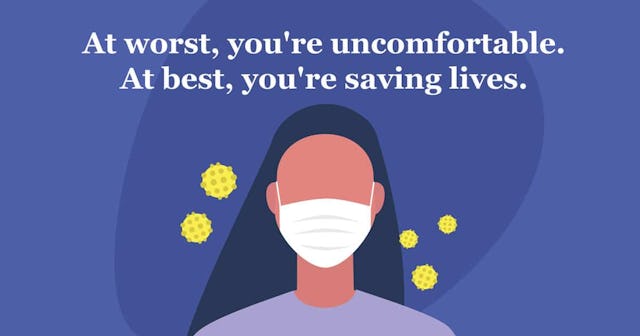Let's Talk About Asymptomatic/Pre-Symptomatic/Silent Transmission

Four months since the World Health Organization (WHO) declared a global pandemic, questions continue to swirl about the novel coronavirus causing COVID-19. We’re still learning about how the virus transmits and how long it lasts on surfaces. We still don’t know why some people lose their life to the disease or suffer for months and others are spared with little more than a head cold, if that. We’re still trying to understand the role of antibodies and immunity, and what it might take to safely return society to some semblance of new normal. When it comes to COVID-19, there’s still so much we don’t know.
But four months in, we are learning. We’re smarter now than when this virus first shut down our schools and cities. We have better treatments and medicines to treat the most ill among us. We are beginning to understand the virus spreads not only through respiratory droplets, but aerosolized particles, as well. And because of that, we are coming to understand that asymptomatic and pre-symptomatic transmission is likely a bigger driver of this pandemic than initially realized.
I know there’s been some confusion on this topic. In the very earliest days of the pandemic, before the words “quarantine” and “social distance” became daily fixtures in our vocabulary, I remember texting with friends and discussing the likelihood that one of us might be asymptomatically infected. Then, we thought probability was high (I’m not far from New York City, the nation’s first epicenter, and many of my neighbors commute to the city daily), but we didn’t know what that would mean or how to find out. In early April, Governor Brian Kemp of Georgia admitted he didn’t know asymptomatic people could transmit the virus, and it became clear the message regarding asymptomatic transmission wasn’t as widespread and universally accepted as I’d believed. Then, in early June, the WHO declared asymptomatic transmission of COVID-19 “very rare. It walked back those comments just a day later to clarify the rates of infection are simply not known.
z_wei/Getty
Then there’s the confusion between asymptomatic—meaning the person is infected but does not and will not show symptoms—and pre-symptomatic—meaning the person is infected and shedding virus, though not yet exhibiting symptoms.
So, yes, there’s been some confusion about the role of asymptomatic and pre-symptomatic transmission. But, like I said, we’re learning and we know more than we did four months ago. A recent study has revealed just how important it is to understand the role of asymptomatic and pre-symptomatic transmission in controlling COVID-19 outbreaks.
The study found that the majority of new cases are tied to so-called “silent transmission”—meaning transmission from people not showing symptoms either because they are pre-symptomatic or asymptomatic. The majority of people!
The study noted that asymptomatic infections account for 17.9 to 30.8% of all infections. Assuming 17.9% of all infections are asymptomatic, the study found that the “presymptomatic stage and asymptomatic infections account for 48% and 3.4% of transmission, respectively.” If we take the higher end of that infection range and assume asymptomatic infections account for 30.8% of infections, then the study found that “the presymptomatic phase and asymptomatic infections account for 47% and 6.6% of transmission, respectively.”
That means, no matter how you look at the numbers, most people are getting infected by someone who at that moment doesn’t feel sick—and may never get to a place where they show symptoms.
What does that mean for the real world? Dr. Eric Feigl-Ding, an epidemiologist and health economist who is also a member of the COVID-19 Taskforce Steering Committee, breaks it down for us in a twitter thread.
What the study shows, and Dr. Feigl-Ding highlights, is that “even if all symptomatic cases are isolated, a vast outbreak can still unfold,” and that “over 1/3 of silent infections must be isolated to suppress a future outbreak.”
Which is all to say we have to recognize, identify, and stop asymptomatic transmission if we want to get this virus under control. Simply isolating symptomatic cases is not a good enough strategy to begin to safely lift restrictions. Short of a full lockdown, to safely return to something resembling normal, the study suggests and Dr. Feigl-Ding emphasizes that we need to do more with respect to rapid contact tracing and testing. We need to be able to identify anyone who was exposed to the virus, who may be infectious and unknowingly spreading the disease. The faster we trace exposures, the sooner we can isolate those people before they can expose others. And we need to have the capacity for mass testing of people, even if they aren’t showing symptoms. Dr. Feigl-Ding recommends a targeted mass testing approach at first—focusing first on “high transmission risk groups like college dorm and fraternity students” but ultimately just ramping up testing in general. The faster we find an outbreak, the faster we can control it.
And also, we all need to be wearing masks. Masks break the chain of silent transmission. The study proves that COVID-19 is spread in large part by people who are feeling healthy in that moment. Wearing a mask reduces the amount of virus potentially escaping from each word we speak and breath we exhale. Therefore, wearing a mask, even if feeling absolutely, completely, totally healthy, is literally the very least you can do to help stop the spread of this virus. At worst, you’re uncomfortable. At best, you’re saving lives.
So, in conclusion, until we can finally get our national act together and develop a testing and tracing system to prevent this virus from spreading unchecked (and even after that): wear a fucking mask.
This article was originally published on